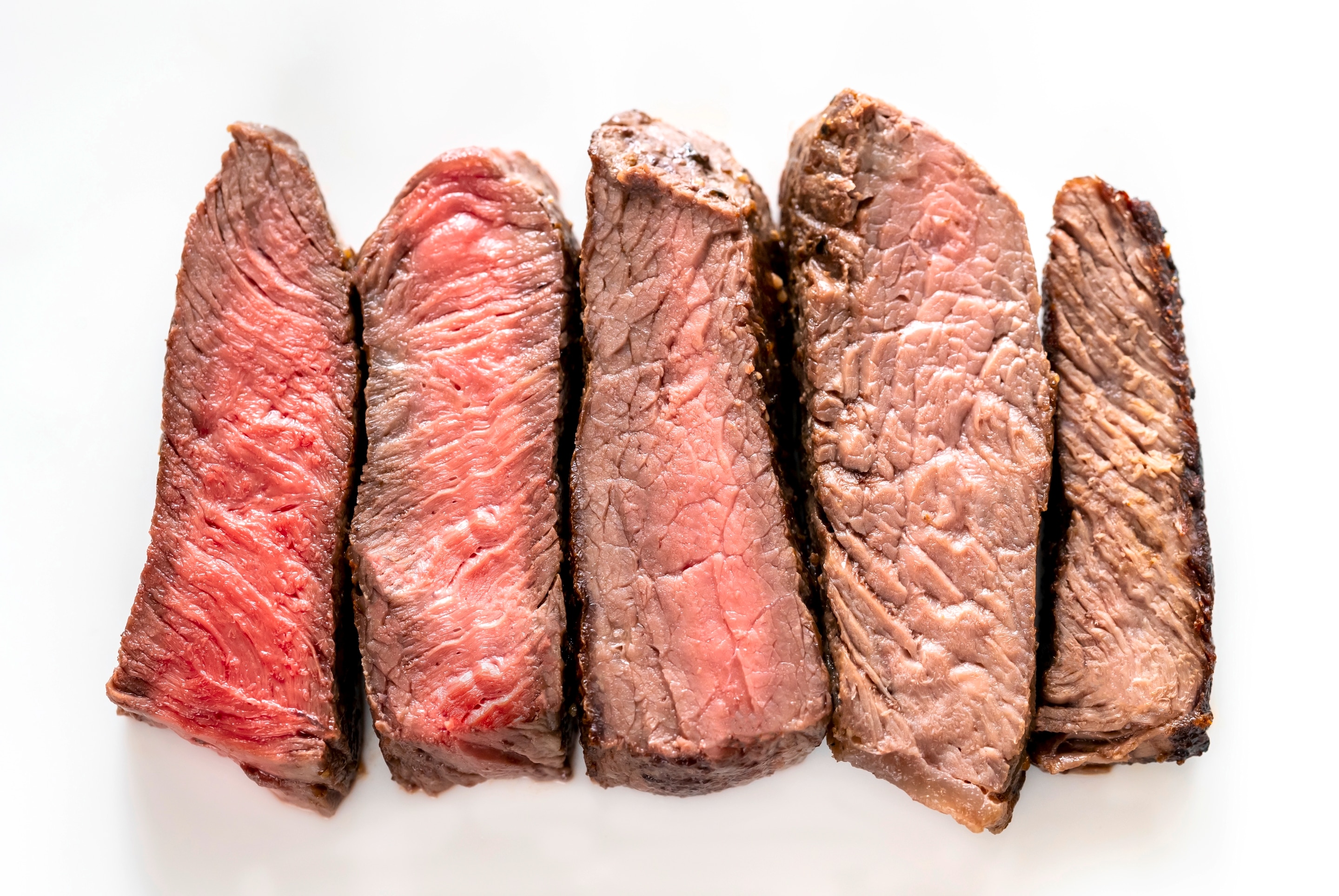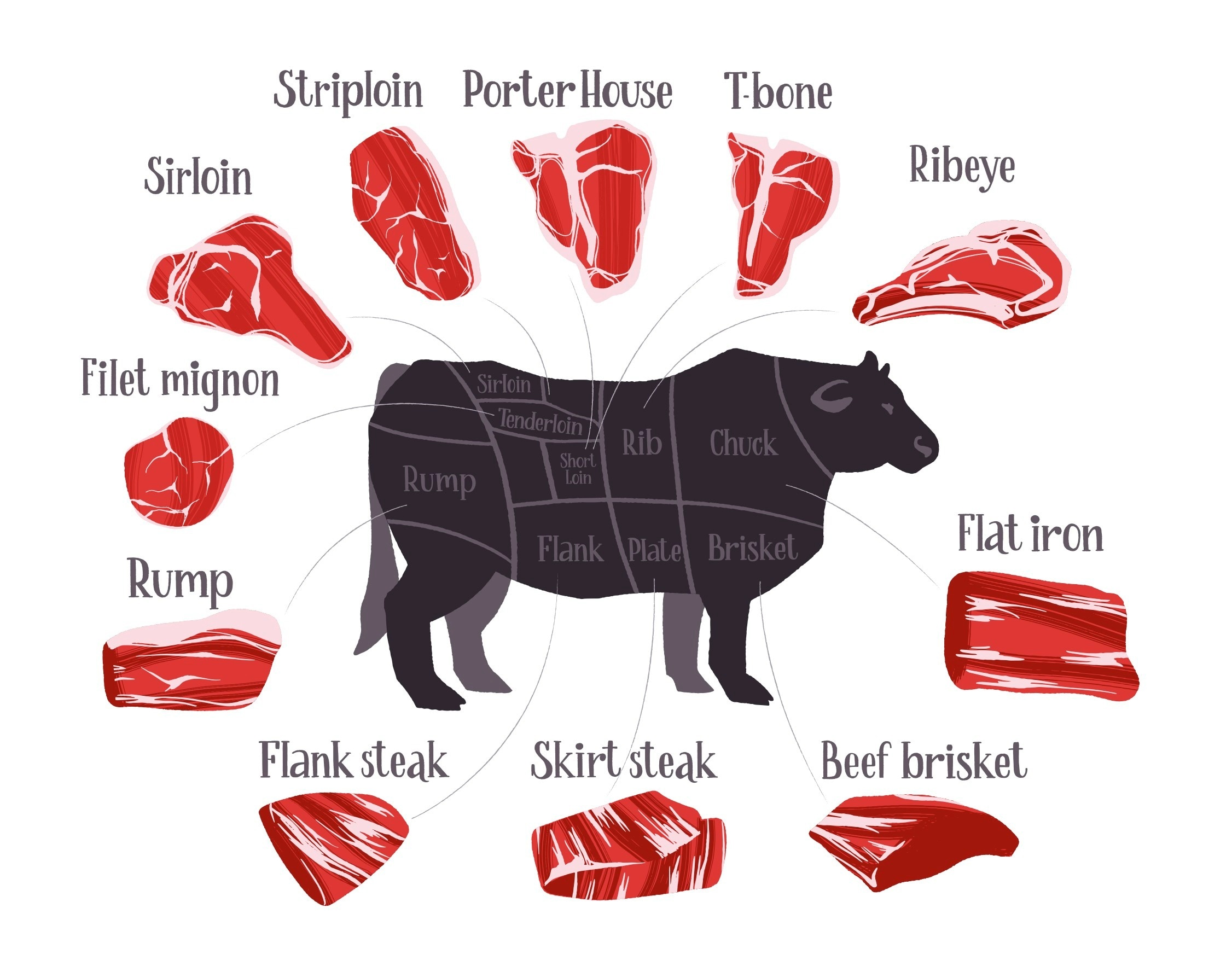Skip to:
Ever wonder which part of the cow your fave steak part comes from?
A cut of steak has always been considered the ultimate date night fare. Steaks have become the quintessential meal shared by lovebirds at fine dining restaurants or lovingly prepared at home to impress a partner. But unlike romcoms, steaks should be enjoyed no matter the occasion and regardless of if you have someone to share it with or not.
Premium cuts of steak are readily available in well-known delis around the metro. Buying from these shops, however, isn’t the most wallet-friendly of choices. If you wish to indulge in steak a lot more often, it pays to know which parts of the beef are affordable and healthier for you. Skip the fat and look for protein-packed pieces instead.
Keep it Clean, Stick with Lean

Go for the lean meat for a healthier steak
Too much of a good thing is bad for you. The same applies to overindulging in all kinds of steak, which has been known to significantly increase cholesterol. To combat this concern and still be able to enjoy eating steaks, start by selecting a leaner cut.
1. Top round roast
Easily the most tender of the steak cuts, the top round roast offers moderately lean beef. Because it comes from the hip area, the tenderness is not accompanied by fat often found in other steak cuts. A favorite choice amongst health-conscious individuals, turn this cut of steak into something fancier. Grab a Knorr Beef Cube and start rolling up a tasty Morcon. With just a single cube, you get the full flavors of a kilo of beef!
Pro tip: when buying from your marketplace suki ask for "kabuligan" if the top round roast isn’t a familiar term to them.
2. Bottom round roast
Taken from the rear leg of a cow which contains a good amount of muscle while being low in fat, the bottom round roast can be prepared in countless ways. Due to the chewier texture of this cut, you might want to consider making use of your instant pot, pressure cooker, or a crockpot. Marinating this portion of beef for several hours prior to cooking can do wonders for infusing the flavor and improving the texture immensely. Bored with searing steaks? Another way to serve this is by making Braised Beef with Broccoli inspired by your go-to Chinese rice toppings dish.
3. Strip steak (Top Sirloin)
With only about 4 grams of unsaturated fat per serving and 50 grams of protein, top sirloin is an easy choice if you need to serve a healthier steak sandwich or Beef Stroganoff packed with all the nutrients you need. Rarely known for its Filipino term “tapadera” it is a regular choice for, you guessed it – the Beef Tapa!
4. Eye of round
When at the butcher’s, ask for an “extra lean” piece. This designation goes to the eye of round that resembles the shape of a tenderloin. An affordable option that won’t break your weekly grocery budget, the eye of round’s tenderness cannot compete with that of a tenderloin steak. As a remedy, turn towards recipes that include marination. How about beefsteak or a nice Filipino-style pot roast with cream sauce.
Beyond the Cut: What Makes Steaks Taste Great

How do you like your steak cooked?
Anyone who has ever cooked steak for the first time (with zero knowledge to boot), will end up with undercooked or overcooked meat. You can have a prime tenderloin and still have dry, tough beef. While a person who has all the right cooking techniques under their apron can turn a London Broil (top round) into a sumptuous, world-class tasting roast that Gordon Ramsay would be proud of.
According to experts, the perfect steak has four of these elements:
- Proper seasoning
- The right pan
- Correct cooking temperature
- A good amount of rest time
You may notice that none of the above components focus on the kinds of steak. Why? Because when you go through each of these aspects, you will learn the reasoning why professional chefs deem cuts unimportant.
Seasoning
Cooking shows all talk about generously seasoning a piece of steak meat with salt and pepper. The trouble is a salt rub (like dry brining) can suck out all the moisture from the meat. This happens when the meat in question is not a huge slab that can withstand the rain of flavor that Salt Bae showers on it.
By understanding how a particular cut cooks, you know that larger meat can take a pre-salt, allowing it to penetrate fully before it goes on a pan. Meanwhile, smaller, thinner pieces would absorb the salt too quickly, rendering it tough and salty.
The pan
A thick-bottomed pan distributes heat evenly. You get a better sear on the crust and meat that is cooked right. It is important to note that each pan is different, so make it a point to know where its hot spots lie. Additionally, it is essential to know that certain cuts may take longer to cook than others.
Temperature
Medium well steak is at 150°C for it to remain nice and juicy. Just as it is important to know your cooking temperature, it’s critical to know at which temperature is it necessary to rest the meat before cooking. When you let the meat come to room temperature before throwing it onto a cast iron pan, griddle, or outdoor grill, you ensure meat cooks thoroughly without causing fibers to tense up and become tough.
Rest time
Before you decide to dig into your steak, you must allow it to rest first. Two to five minutes of rest will give you a tastier and juicier bite. If you are worried that resting time differs depending on the cut, the simple rule of thumb you can follow is to allow your beef to rest for half the time you cook it.
Sure, you can always trim away the fat from a steak and go for olive oil instead of the traditional butter when cooking. Why go to this trouble when you can easily add leaner cuts of meat to your shopping list?
An affordable menu option that you should not think twice about adding to the cart, the low-fat cut of steak will work especially well if you are on a Keto diet. Even if you aren’t trying to manage your weight, leaner steak meat is healthier. If you haven’t tried these parts yet, make sure to look for them on your next shopping trip

